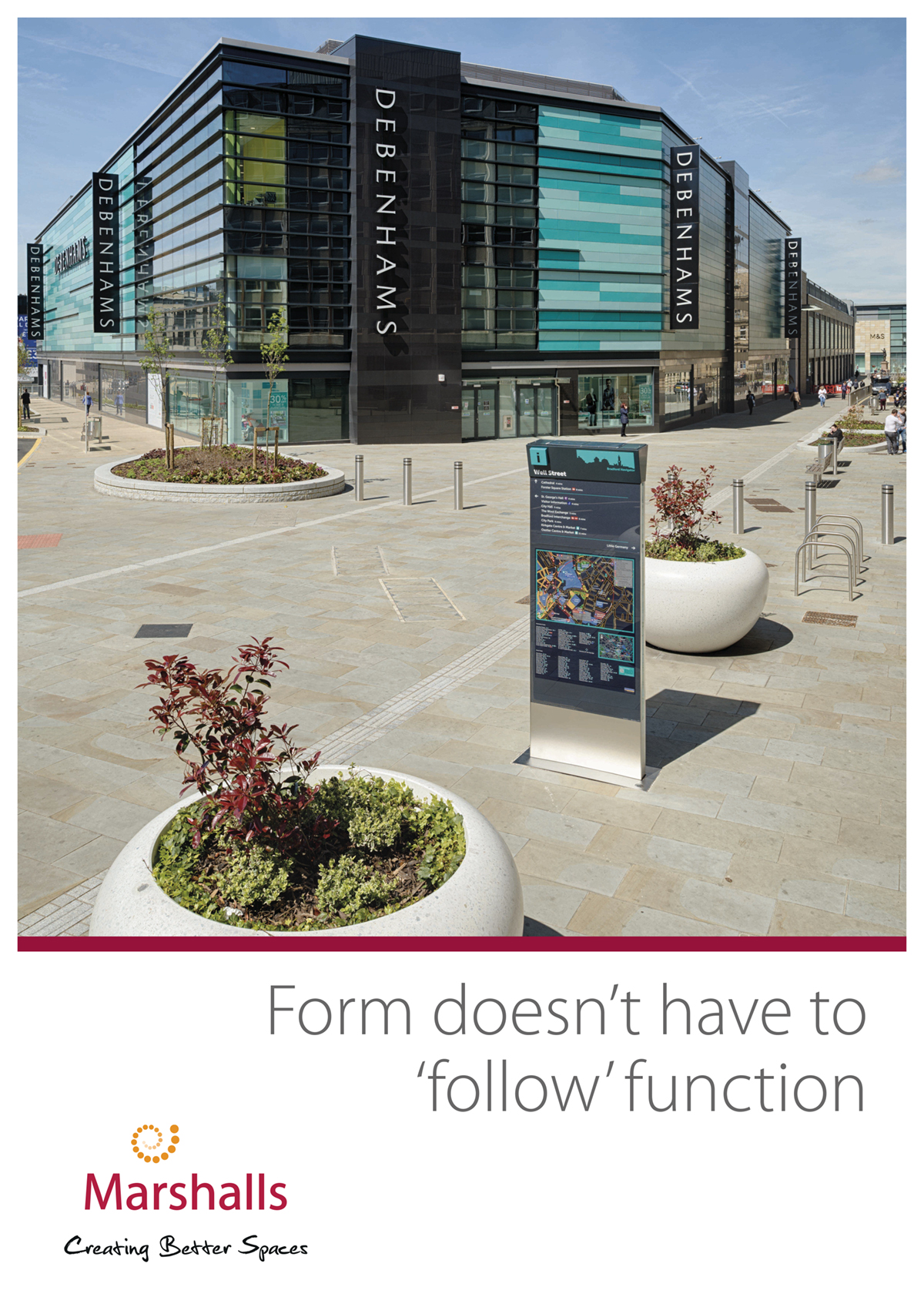This ebook from Marshalls examines the challenges of protecting public spaces from criminal and terrorist vehicle attacks without sacrificing the aesthetics of the built environment or creating an oppressive, “fortress-like” atmosphere
Jaz Vilkhu, Managing Director of Marshalls Landscape Protection, argues that improving protection and public safety is not simply a matter of putting up steel bollards or reinforced concrete barriers. Psychology has a key role to play and a fine balance is needed to ensure safeguarding measures do not create a feeling of fear that ultimately keeps people away.
He looks at some of the growing list of products that integrate security measures and hostile vehicle mitigation with appealing design, such as planters, seating and lighting columns. With the strongest specification available, these can stop a 7.5-tonne articulated lorry travelling at 50mph.
The design and layout of public spaces also has a role to play. Chicanes and width-restricted lanes can slow down traffic to prevent cars mounting the pavement, while specialist kerb systems can help to deflect vehicles away.
It is not just the threat of terrorism that needs to be guarded against; criminal activity, such as ram raids, cost millions every year, with £8m alone lost to vehicle attacks on ATMs.
Up until recently, there has been no tested and proven standard for security products designed to protect against such attacks.
Roger Knight, Marshalls’ Head of New Product Development and Engineering for Landscape Protection, takes a look at the new PAS 170 standard and how it can help planners to specify products proportionate to the level of threat.
Incorporating these types of security measures into the design process, backed by official standards, means that public spaces can stay attractive, welcoming and accessible while also being safe.



